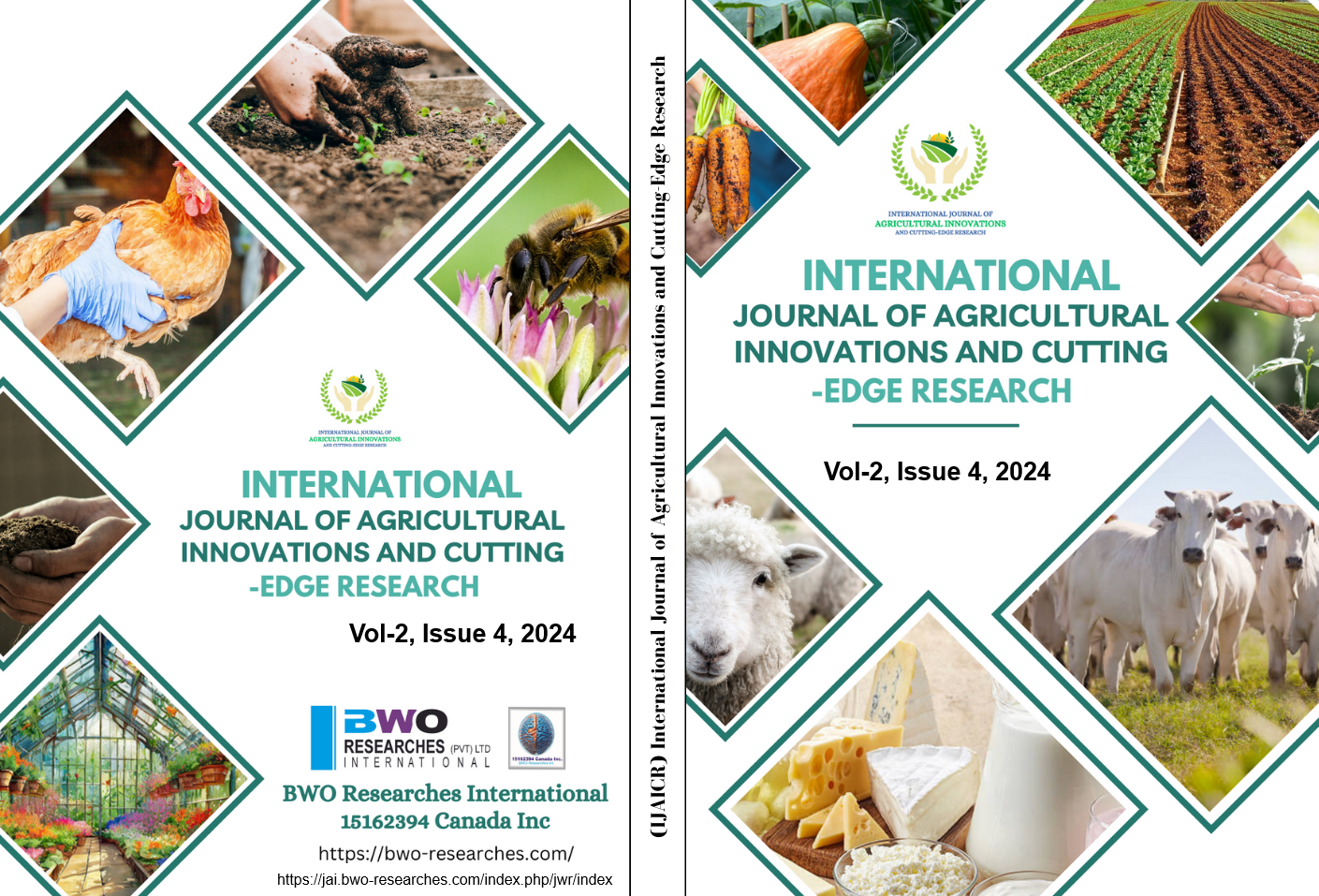Evaluation of Early Growth Response of Wheat Genotypes Grown Under PEG-Mediated Water Stress Conditions
Keywords:
PEG, Drought, AZRC Dera, Akbar-19, Wheat landrace, Durum wheatAbstract
The yield of bread wheat (Triticum aestivum L.), an important staple food cereal crop, is constantly challenged by drought stress. The unexpected changes in rainfall and heat spells induced by climate change further aggravate wheat production. Strategies to fast-screen wheat genotypes for drought stress in a controlled environment are key to wheat breeding programs' success in developing drought-tolerant wheat cultivars. The current study was designed to evaluate the early growth response of wheat genotypes grown under PEG-mediated water stress conditions. Six wheat genotypes comprising local wheat cultivars, landraces and durum wheat advanced lines were grown in Petr-dishes and pots under PEG-mediated water stress conditions (5% and 10% PEG), using a Completely Randomized Design (CRD). Data collected for parameters related to early growth responses such as root, coleoptile and leaf length, root fresh and dry biomass, no. of tillers plant-1, and leaf total chlorophyll contents were subjected to R-package. Results showed significant differences among all early growth parameters genotypes in response to 5% and 10% PEG concentrations (p = 0.05). PEG concentration of 10% significantly reduced root length, root density, coleoptile length, root fresh and dry weight, and leaf total chlorophyll contents among all genotypes. Wheat landraces and advanced durum wheat lines showed better drought tolerance at 10% PEG concentration relative to two wheat cultivars AZRC Dera and Akbar-19 by maintaining optimal root length, coleoptile length, root density and root weight. Landrace acc#11239 and durum line IDN-733 were found to be most drought tolerant to 10% high PEG concentration in terms of root and coleoptile length and root fresh and dry weight. The findings of this study are important for breeders to evaluate wheat genotypes for drought stress tolerance and develop climate-resilient and drought-tolerant wheat cultivars for better yield production.
References
Asseng S, Cao W, Zhang W, Ludwig F. Crop physiology, modelling and climate change: impact and adaptation strategies. Crop Physiol. 2009; 511-43
Bayoumi TY, Eid MH, Metwali EM. Application of physiological and biochemical indices as a screening technique for drought tolerance in wheat genotypes. African J Biotechnol. 2008; 7:2341–2352
Dilday RH, Mgonja MA, Amonsilpam SA, Collins FC, Wells BR. Plant height vs. Mesocotyl and coleoptiles elongation in rice: linkage or pleiotropism. Crop Science. 1990; 30:815–818
Dodig D, Zorić M, Kandić V, Perović D, Šurlan‐Momirović G. Comparison of responses to drought stress of 100 wheat accessions and landraces to identify opportunities for improving wheat drought resistance. Plant Breeding. 2012; 131(3):369-739
Farooq S, Onen H, Ozaslan C, Baskin CC, Gunal H. Seed germination niche for common ragweed (Ambrosia artemisiifolia L.) populations naturalized in Turkey. South African J Bot. 2019;123: 361–371
Jatoi SA, Latif MM, Arif M, Ahson M, Khan A, Siddiqui SU. Comparative assessment of wheat landraces against polyethene glycol simulated drought stress. Sci. Tech. Develop. 2014; 33: 1-6
Kumari A, Sairam RK, Singh SK, Krishna GK. Early growth response: an indicator of subsequent growth and yield of wheat genotypes grown under simulated water stress conditions. Indian Journal of Plant Physiology. 2014; 19:94-100
Lobell DB, Burke MB. Why are agricultural impacts of climate change so uncertain? The importance of temperature relative to precipitation. Environmental Research Letters. 2008; 3(3):034007
Memon S, Abro AA, Jakhro MI, Farid A, Habib M, Ahmed M, Bhutto LA, Memon SA, Farooq M. Polyethylene glycol mediated osmotic stress impacts on growth and biochemical aspects of wheat under artificial osmotic stress condition. Journal of Innovative Sciences. 2023;9(1):44-50
Meneses CH, Bruno RD, Fernandes PD, Pereira WE, Lima LH, Lima MM, Vidal MS. Germination of cotton cultivar seeds under water stress induced by polyethyleneglycol-6000. Scientia Agricola. 2011; 68:131-8
Mohammadi R. Efficiency of yield-based drought tolerance indices to identify tolerant genotypes in durum wheat. Euphytica. 2016; 211:71-89
Mottaleb KA, Kruseman G, Snapp S. Potential impacts of Ukraine-Russia armed conflict on global wheat food security: A quantitative exploration. Global Food Security. 2022; 35: p.100659
Nawaz S, Ahmed N, Iqbal A, Khaliq I. Optimization of regeneration protocols for wheat under drought and salt stress. Pak. J. Agri. Sci. 2013; 50: 663-670
Pour-Aboughadareh A, Etminan A, Abdelrahman M, Siddique KH, Tran LS. Assessment of biochemical and physiological parameters of durum wheat genotypes at the seedling stage during polyethene glycol-induced water stress. Plant Growth Regulation. 2020; 92(1):81-93
Rauf M, Munir M, Ul Hassan M, Ahmad M, Afzal M. Performance of wheat genotypes under osmotic stress at germination and early seedling growth stage. African J Biotechnol. 2007;6: 971–975
Rosenzweig C, Jones JW, Hatfield JL, Ruane AC, Boote KJ, Thorburn P, Antle JM, Nelson GC, Porter C, Janssen S, Asseng S. The agricultural model intercomparison and improvement project (AgMIP): protocols and pilot studies. Agricultural and forest meteorology. 2013; 170:166-82
Shiferaw B, Smale M, Braun HJ, Duveiller E, Reynolds M, Mauricio G. Crops that feed the world 10. Past successes and future challenges to the role played by wheat in global food security. Food security. 2013; 5:291-317
Additional Files
Published
How to Cite
Issue
Section
License
Copyright (c) 2024 International Journal of Agricultural Innovations and Cutting-Edge Research (HEC Recognised)

This work is licensed under a Creative Commons Attribution-ShareAlike 4.0 International License.
BWO Research International
15162394 Canada Inc.,
Kitchener, ON, N2G2B3,
Canada

